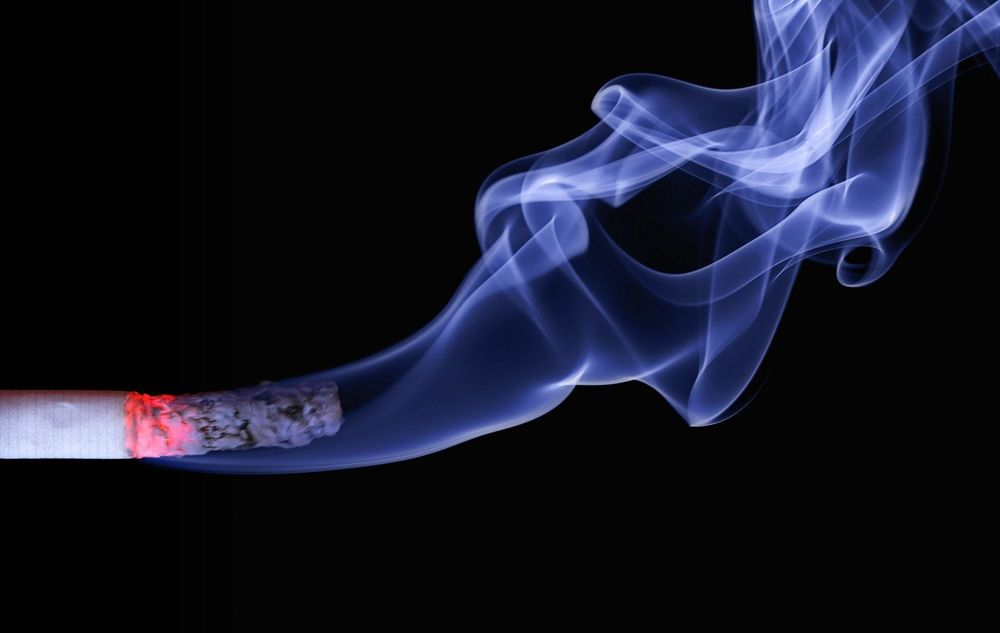Smoking cessation for many weeks prior to and after surgery is essential to maximize healing and reduce the risks associated with poor wound healing. The components of cigarettes that affect healing include nicotine, carbon monoxide, and hydrogen cyanide. It is important to seek not only a fellowship-trained but also a double board-certified facial plastic surgeon if you have aesthetic concerns about your face and/or neck.

The Effects of Cigarettes on Healing
Dr. Jeffrey Harmon
Nicotine Constricts Blood Vessels and Encourages Blood Clots
Present not only in cigarettes but also liquid vaping products, cigars, smokeless tobacco products, and hookah tobacco, this highly addictive substance acts on tissue in two ways. First, nicotine constricts small blood vessels, restricting the flow of oxygen and nutrients to healing tissue. Second, nicotine encourages blood to clot, which also serves to restrict blood flow to healing tissue. We counsel patients to avoid all nicotine-containing products, not just cigarettes, peri-operatively.
Carbon Monoxide Reduces the Ability of Blood to Carry Oxygen and Release It to Tissues
Carbon monoxide, a well-known poison that is released from fireplaces, wood-burning stoves, gas ranges, and furnaces in homes, is also present in cigarette tobacco. Carbon monoxide acts to impair healing in two ways. First, carbon monoxide reduces the ability of blood to carry oxygen to tissue by replacing oxygen in the hemoglobin contained in blood. Second, carbon monoxide reduces the ability of blood to release oxygen to tissue due to the changes that occur to the hemoglobin in blood when carbon monoxide binds to it.
Hydrogen Cyanide is a Poison that Prevents Cells from Utilizing Oxygen
Originally used as a chemical weapon, hydrogen cyanide is present not only in cigarettes but also in pesticides, fumigants, and plastics. Hydrogen cyanide is a poison that stops the ability of cells to utilize oxygen delivered to it by the blood. This results in cell death and, as a result, poor healing.
The Effects of Nicotine, Carbon Monoxide, and Hydrogen Cyanide are to Impair Healing and Increase the Risk of Infection
The risk of infection and abnormal scarring increase significantly with smoking. The risk of poor tissue perfusion to the skin also increases, potentially leading to loss of skin after facial plastic surgery procedures, including facelifts, neck lifts, nose surgery, and eyelid surgery.
Trust Your Face to a Facial Plastic Surgeon
It is important to seek a fellowship-trained specialist in plastic surgery of the face and neck when you have concerns about your face or neck.
Why Choose Dr. Harmon
- The mission of Harmon Facial Plastic Surgery is to help people along their journey towards self-confidence, to feel good about feeling good.
- Dr. Harmon is a double board-certified facial plastic surgeon.
- Dr. Harmon values making patients feel welcomed, listened to, and respected.
- Dr. Harmon graduated with honors from Cornell University with a Bachelor of Science degree in molecular biology.
- Dr. Harmon earned his medical degree from the University of Cincinnati.
- Dr. Harmon underwent five years of extensive training in head at neck surgery at the prestigious residency program at the University of Cincinnati.
- Dr. Harmon then underwent focused fellowship training in cosmetic facial plastic surgery through the American Academy of Facial Plastic and Reconstructive Surgery (AAFPRS) with the world-renowned surgeon, Dr. Andrew Jacono, on Park Avenue in New York City.
Request a Consultation
Request a consultation with Dr. Harmon at Harmon Facial Plastic Surgery in Cincinnati. Visit our clinic. You will learn more about Dr. Harmon’s credentials, style, and approach. Build a relationship with our dedicated team. Do not stop at searching “plastic surgery near me.” Get in touch with us to learn more!
This blog post is for educational purposes only and does not constitute direct medical advice. It is essential that you have a consultation with a qualified medical provider prior to considering any treatment. This will allow you the opportunity to discuss any potential benefits, risks, and alternatives to the treatment.
